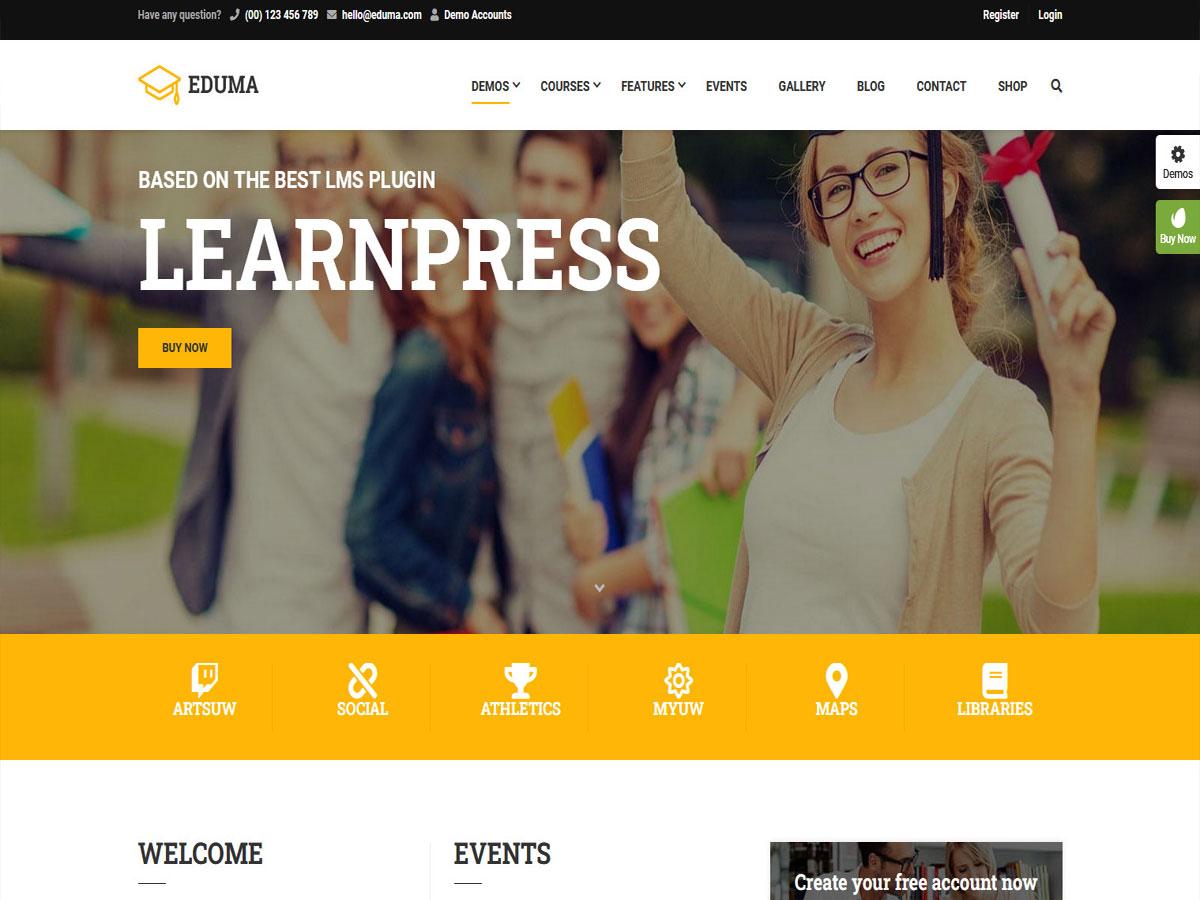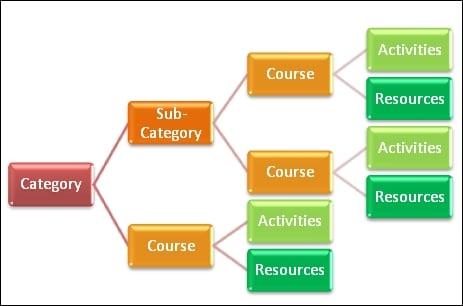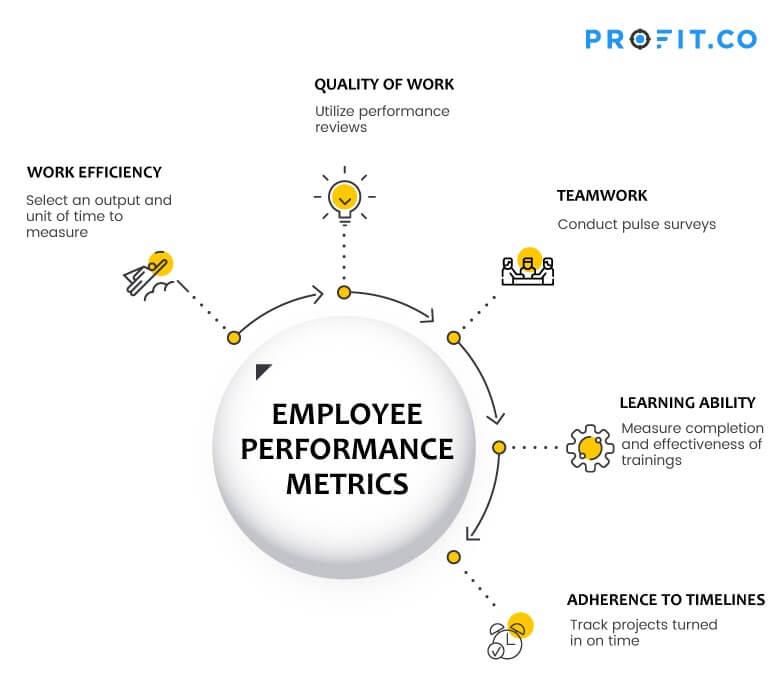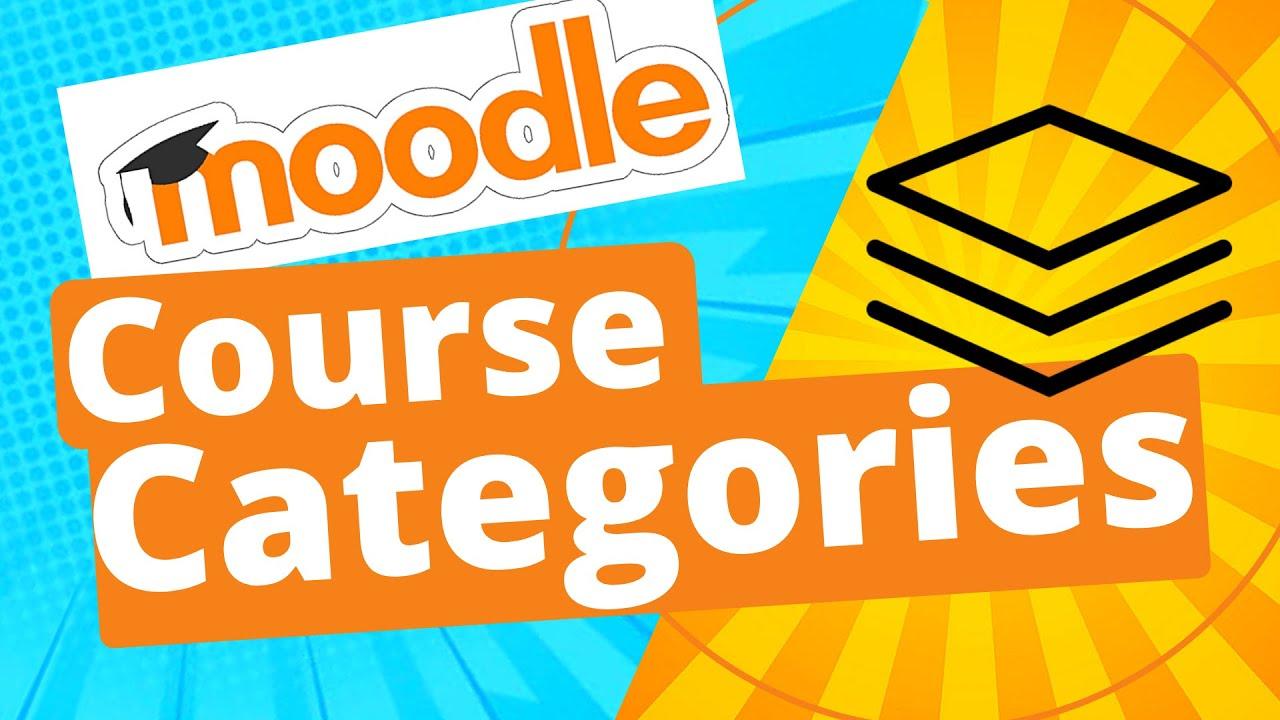Unlock the potential of your online education platform with Eduma! Creating a courses category is a breeze and can transform your site into an engaging learning hub. Follow our simple guide to inspire and connect with learners like never before!
How to Create Courses Category in Eduma Theme: A Simple Guide
Introduction:
In today’s digital age, the ability to share knowledge and empower others through online courses has never been more accessible or essential. Whether you’re an educator, a business professional, or a passionate hobbyist, creating a structured learning environment can transform lives and fuel personal growth. The Eduma theme, renowned for its user-friendly interface and powerful features, provides an exceptional platform for designing and categorizing your courses with ease. In this article, we will guide you step-by-step through the process of creating a dynamic courses category in the Eduma theme—unlocking the potential for your audience to discover, engage, and thrive in their educational journeys. Embrace the opportunity to inspire and lead others; let’s embark on this creative endeavor together!
Creating an Engaging Course Category with Eduma Theme
When it comes to building an online learning platform, the importance of a well-structured course category cannot be overstated. The Eduma theme provides a vibrant and dynamic framework to showcase your educational offerings effectively. An engaging course category acts not just as a directory but as a powerful tool to captivate your students’ interest and guide them towards making informed decisions about their learning paths.
To create an enticing course category, start by defining your audience. Understand their needs, interests, and challenges. This information will help you tailor your course categories to better resonate with potential learners. Consider the following aspects:
- Target demographics: Age, profession, and background.
- Learning goals: What skills are they looking to develop?
- Preferred learning styles: Do they favor video, text, or interactive content?
Once you have a clear understanding of your audience, it’s time to organize your courses into well-defined categories. With Eduma, you can easily create categories that reflect the themes or disciplines of your courses. Use descriptive titles that instantly convey what learners can expect, and don’t shy away from using keywords that enhance SEO visibility.
Next, focus on the visual appeal of your course categories. Eduma allows for customization that can make your categories stand out. Consider the following design elements:
- Images and Icons: Use relevant visuals to enhance understanding.
- Color Schemes: Choose colors that evoke the right emotions and align with your brand.
- Layout Options: Experiment with grid vs. list layouts to see what works best.
Don’t forget to include course descriptions that are not only informative but also engaging. A well-crafted description should highlight the benefits of the course, the skills learners will acquire, and perhaps even a personal story or testimonial. This can significantly boost enrollment rates.
| Course Category | Featured Courses | Duration |
|---|---|---|
| Web Development | HTML Basics, CSS Mastery | 4 weeks |
| Digital Marketing | SEO Essentials, Social Media Strategy | 6 weeks |
| Graphic Design | Adobe Illustrator, Canva Basics | 5 weeks |
leverage social proof by displaying reviews and ratings for each course category. This not only builds credibility but also fosters a sense of community. Successful learners can inspire potential students to take the plunge and enroll, knowing that others have benefited from their chosen path.
Understanding the Importance of Course Categories for Learners
In the rapidly evolving landscape of online education, the organization of course content plays a crucial role in enhancing the learner’s experience. Course categories serve as navigational tools that guide learners through the vast array of subjects available, making it easier for them to find courses that align with their interests and goals. By implementing a well-structured categorization system, educators can foster a more engaging and efficient learning environment.
Why Course Categories Matter:
- Enhanced Discoverability: When learners can easily locate courses by category, they are more likely to explore new subjects and expand their knowledge base.
- Improved Learning Pathways: Categories provide a roadmap for learners, allowing them to see prerequisites and related courses, which can enhance their educational journey.
- Personalized Experience: With effective categorization, learners can quickly filter content that resonates with their specific needs, ensuring that they spend more time on topics that excite them.
Creating distinct categories not only benefits learners but also empowers course creators to present their offerings in a more organized manner. This clarity can lead to higher enrollment rates, as potential students can easily understand the scope of what is available to them. Moreover, a well-categorized course catalog can improve retention rates, as learners are more likely to complete courses when they can seamlessly navigate their educational pathways.
Tips for Effective Course Categorization:
- Identify Key Themes: Analyze the subjects you offer and group them into broader themes that make sense for your audience.
- Use Clear and Descriptive Titles: Each category title should be straightforward and indicative of the content contained within, making it easier for learners to find what they need.
- Regularly Review and Update Categories: As new courses are added or existing ones are modified, ensure that your categories reflect these changes to maintain relevance.
To illustrate the impact of categories, consider the following table showcasing sample course categories and their potential course offerings:
| Category | Sample Courses |
|---|---|
| Technology | Web Development, Cybersecurity Basics, Data Science Essentials |
| Business | Entrepreneurship 101, Digital Marketing Strategies, Project Management |
| Health & Wellness | Nutritional Science, Mental Health Awareness, Yoga for Beginners |
Ultimately, course categories are not just organizational tools; they are vital components that enhance the overall learning experience. By prioritizing the development of clear and comprehensive course categories, educators can significantly improve learner engagement and satisfaction, paving the way for a more impactful educational journey.

Setting Up Your Eduma Theme: A Step-by-Step Approach
Creating a courses category in the Eduma theme is a straightforward process that can significantly enhance the organization and accessibility of your educational offerings. By effectively categorizing your courses, you not only make it easier for your students to find what they need, but you also improve the overall user experience of your website.
To begin, log into your WordPress dashboard and navigate to the Courses section. Here, you will find an option labeled Categories. This is where the magic happens! Click on it to access the categories management page. You’ll want to create categories that reflect the subjects or types of courses you offer. Consider the following tips:
- Be Descriptive: Use clear and descriptive names for your categories. For instance, if you offer a course in photography, label it as “Photography Courses” instead of just “Photography.”
- Keep It Simple: Avoid long or complicated category names. Simplicity ensures that users can quickly understand what each category entails.
- Prioritize User Experience: Think about the paths your students might take. Group similar courses together to facilitate easy navigation.
After deciding on your categories, it’s time to add them. Click on the Add New Category button and fill in the details:
| Field | Description |
|---|---|
| Category Name | Enter the name of the category (e.g., “Business Courses”). |
| Slug | A URL-friendly version of the category name (e.g., “business-courses”). |
| Parent Category | Select a parent category if this is a sub-category. |
| Description | A brief overview of what courses fall under this category. |
Once you have filled in the necessary information, click on the Add New Category button again to save your work. Repeat this process for each course category you wish to create. It’s essential to remember that once your categories are set up, you can easily modify them by adding new courses or editing existing ones to ensure everything is up-to-date.
ensure that the categories are displayed prominently on your site. You can do this by adjusting the settings in your theme customization options. Highlighting your categories can drive more traffic to specific courses and enhance engagement.

Exploring the User-Friendly Interface of Eduma
Creating a course category in the Eduma theme is a seamless and intuitive experience that can greatly enhance the learning environment you’re establishing. The user-friendly interface makes it easy for educators and administrators to categorize their courses, helping learners find the content they need quickly and efficiently.
To get started, follow these simple steps:
- Access the Dashboard: Log into your WordPress dashboard and navigate to the Eduma theme settings. The user-friendly layout ensures that you can find what you need without any hassle.
- Select Course Categories: In the left sidebar, click on “Courses” and then select “Categories” from the dropdown. This is where the magic begins.
- Add New Category: Click on the “Add New Category” button. Here, you’ll be greeted by fields to enter the category name, description, and slug. Use clear and descriptive titles to make it easy for users to understand the category’s focus.
- Customize with Icons: To make your categories visually appealing, consider adding icons or thumbnails. This not only enhances aesthetics but also improves user navigation.
- Save Changes: Don’t forget to hit the “Add New Category” button once you’re satisfied with your entries. Your new category will now be listed in the course categories section.
One of the best features of Eduma is its ability to allow course instructors to assign courses to multiple categories. This flexibility is crucial for users who may be interested in various subjects. For instance, a course on “Digital Marketing” could be categorized under both “Marketing” and “Technology.” This enhances discoverability and encourages learners to explore related content.
Moreover, to maintain a clean and organized look, you can easily reorder categories through a simple drag-and-drop interface. This intuitive feature allows you to prioritize categories based on learner needs or seasonal trends, ensuring that your most relevant courses are always front and center.
Here’s a quick overview of the benefits of using categories in Eduma:
| Benefit | Description |
|---|---|
| Improved Navigation | Helps users locate courses easily, enhancing the overall user experience. |
| Increased Engagement | Encourages learners to explore related courses, boosting course enrollment. |
| Customizable Appearance | Allows for the addition of icons and images, creating an attractive layout. |
| Flexible Organization | Facilitates the assignment of courses to multiple categories for better reach. |
Utilizing the category feature in the Eduma theme not only organizes your courses but also enhances the learning journey for your users. It’s a powerful tool that, when used effectively, can lead to a more engaged and satisfied community of learners.
Crafting Compelling Course Descriptions that Attract Learners
When it comes to attracting learners, the first impression is critical, and a compelling course description serves as your finest marketing tool. A well-crafted description not only highlights the benefits of the course but also resonates emotionally with potential students. To achieve this, consider the following strategies:
- Identify Your Audience: Understand who your ideal learners are. Tailor your language, tone, and content to speak directly to their aspirations and challenges.
- Showcase Benefits Over Features: Instead of merely listing what your course includes, emphasize how it will positively impact the learners’ lives. For instance, rather than stating “10 video lessons,” say “Gain practical skills through engaging video lessons that empower you to tackle real-world challenges.”
- Use Engaging Language: Create a vivid picture with your words. Use action verbs and descriptive adjectives that evoke emotions, making the course feel exciting and essential.
Incorporating testimonials or success stories can further enhance your course descriptions. When potential students see real-world applications and success, they are more inclined to enroll. Consider adding a section that highlights previous learners’ achievements:
| Student | Achievement |
|---|---|
| Jane Doe | Launched her own graphic design business |
| John Smith | Transitioned to a higher-paying tech role |
| Mary Johnson | Published her first eBook |
Another effective strategy is to create a sense of urgency. Phrases like “limited spots available” or “enroll by [date] to secure your discount” can motivate potential learners to take action quickly. It’s all about fostering a fear of missing out (FOMO) that drives enrollment.
Lastly, consider including a call to action that clearly guides potential students on the next steps. Whether it’s “Join us today” or “Start your learning journey now,” make it direct and inviting. A strong, clear CTA can significantly increase your enrollment rates.

Organizing Courses for Maximum Impact and Clarity
Creating a well-structured course category in the Eduma theme can significantly enhance learner engagement and retention. When courses are organized effectively, students can easily navigate through them, which leads to a more enjoyable and productive learning experience. Here are some key strategies to ensure your course categories resonate with your audience:
- Define Clear Objectives: Before you start categorizing your courses, it’s essential to understand what you want your learners to achieve. Each category should embody specific learning outcomes that align with students’ needs.
- Group by Theme: Consider clustering courses that share a common theme or subject area. This way, learners can explore interconnected content that builds upon their knowledge progressively.
- Utilize Tags and Filters: Incorporate tags and filtering options to allow students to quickly find courses that match their interests or skill levels. This added functionality can significantly enhance their browsing experience.
- Regular Updates: Keep your categories dynamic by regularly reviewing and updating course offerings. This ensures that your content remains relevant and aligned with industry trends.
For a more visual representation, consider the following table, which illustrates potential course categories and their associated themes:
| Course Category | Theme | Example Courses |
|---|---|---|
| Web Development | Programming Languages | HTML Basics, JavaScript Essentials |
| Graphic Design | Visual Arts | Photoshop Fundamentals, Logo Design |
| Digital Marketing | Online Strategies | SEO Mastery, Social Media Tactics |
Incorporating feedback from your learners can also guide the organization of your courses. Encourage users to share their experiences and suggestions, which can provide insights into how your categories can be refined. Implementing a feedback loop not only improves your course offerings but also fosters a sense of community among your learners.
Ultimately, the goal is to create an environment where learners feel empowered to take charge of their educational journey. A well-organized course category not only supports this but also reflects a commitment to quality education. Emphasizing clarity and structure can make a significant difference in how effectively your courses are received and completed.
Remember, the journey of learning is as important as the destination. By focusing on organizing your courses for maximum impact, you’re not just delivering content; you’re inspiring change and growth in every learner who engages with your platform.
Utilizing Visual Elements to Enhance Course Categories
In today’s digital learning landscape, the presentation of course categories can significantly impact user engagement and retention. By incorporating visual elements, you can create a striking and intuitive experience that not only attracts learners but also aids in their journey through your educational offerings.
Images and Icons: Utilize relevant images and icons to represent each course category visually. This approach can help users quickly grasp the essence of what each category offers. Consider using:
- High-quality images: Select images that resonate with the course content and evoke curiosity.
- Consistent iconography: Use a uniform style for icons to maintain a coherent look throughout your categories.
- Text-overlay on images: Overlay concise text on images to provide context without overwhelming the visual.
Color Schemes: A well-thought-out color palette can enhance the emotional connection to your course categories. Use colors that reflect the theme and tone of the courses. For instance:
- Warm tones: Use reds and oranges for creative courses to evoke passion and energy.
- Cool tones: Blues and greens work well for technical or scientific courses, promoting a sense of calm and focus.
- Contrasting colors: Make category buttons or links stand out by using contrasting colors that encourage clicks.
Layout and Structure: A well-structured layout not only improves aesthetics but also enhances functionality. Consider using grids or cards to display course categories. This allows for:
- Easy navigation: Users can quickly scan through categories and find what interests them.
- Responsive design: Ensure that your layout adapts well to various screen sizes, providing a seamless experience across devices.
Interactive Elements: Adding interactive features like hover effects or animations can make your course categories more engaging. For example:
- Hover animations: A subtle zoom or color change can draw attention and invite exploration.
- Expandable categories: Allow users to click on a category for a dropdown of sub-categories or featured courses, making navigation intuitive.
| Visual Element | Purpose |
|---|---|
| High-quality images | Capture attention and convey course themes |
| Consistent icons | Create a cohesive visual language |
| Color contrasts | Highlight important features |
| Responsive grid layout | Enhance user experience across devices |
| Interactive hover effects | Encourage user exploration |
By strategically integrating these visual elements, you can transform your course categories into a compelling gateway that not only informs but also inspires. Each aspect of your design should resonate with the values of your educational platform, guiding learners to their next great adventure in knowledge.

Integrating SEO Best Practices for Better Visibility
To enhance your course category visibility in search engines, implementing SEO best practices is crucial. Start by conducting thorough keyword research to identify terms that potential students might use when searching for courses. Utilize tools like Google Keyword Planner or Ubersuggest to discover high-traffic keywords related to your course topics. Once you’ve found your keywords, integrate them organically into your course titles, descriptions, and metadata. This strategic placement not only attracts search engines but also makes your content more relevant to users.
Optimize Your Course Descriptions: Your course descriptions should be more than just informative; they should also be engaging. Write compelling descriptions that incorporate your target keywords while clearly outlining the benefits and learning outcomes of each course. A well-structured description can improve readability and increase the likelihood of attracting new students. Consider using bullet points to highlight key features:
- Comprehensive curriculum covering all essential topics
- Interactive elements to enhance learning
- Access to expert instructors for personalized guidance
Utilize Internal Linking: Creating a robust internal linking structure within your Eduma theme can significantly improve your SEO efforts. Link related courses together and to relevant blog posts or resources on your site. This not only guides users through your content but also helps search engines understand the relationship between different pieces of content. Use descriptive anchor text that includes your keywords to reinforce the context of the links.
| SEO Element | Best Practice |
|---|---|
| Title Tags | Include primary keywords and keep them under 60 characters. |
| Meta Descriptions | Craft engaging summaries under 160 characters. |
| Image Alt Text | Describe images with relevant keywords to improve visibility. |
Leverage Social Proof: Incorporating testimonials and reviews from past students can enhance credibility and encourage more sign-ups. Social proof acts as a powerful motivator, and featuring it prominently on your course category page can greatly impact user decision-making. Ensure these reviews are optimized with relevant keywords to further boost your page authority.
Lastly, don’t underestimate the role of mobile optimization in your SEO strategy. With an increasing number of users accessing educational content via mobile devices, ensuring your course categories are mobile-friendly is essential for retaining traffic and improving ranking. Regularly test your website’s mobile responsiveness, and consider using tools like Google’s Mobile-Friendly Test to ensure that your users have a seamless experience.

Encouraging User Interaction with Course Categories
Creating engaging course categories is essential for fostering user interaction and enhancing the overall learning experience. By organizing your courses effectively, you not only help users find what they’re looking for but also spark curiosity and drive enrollment. Here are some compelling strategies to encourage interaction:
- Utilize Clear and Descriptive Titles: Make sure each course category title is straightforward and informative. Titles should provide insight into what users can expect, enticing them to explore further.
- Incorporate Visual Elements: Use eye-catching images or icons that represent each category. Visual cues can draw users in and make navigation more enjoyable.
- Add Engaging Descriptions: Write concise yet captivating descriptions for each category. Highlight the benefits of the courses within that category, addressing the needs and aspirations of potential learners.
- Implement Filtering Options: Allow users to filter courses by skill level, duration, or topics. This feature not only simplifies the search process but also increases the likelihood of users discovering new interests.
- Showcase Popular Courses: Within each category, highlight trending or highly-rated courses. This not only builds trust but encourages users to join in on what others are excited about.
Another effective way to promote interaction is through community engagement. Consider adding discussion forums or Q&A sections within each course category. This space can be invaluable for learners to share insights, ask questions, and connect with each other.
| Engagement Strategy | Expected Outcome |
|---|---|
| Clear Titles & Descriptions | Improved Navigation |
| Visual Elements | Increased Interest |
| Filtering Options | Enhanced User Experience |
| Community Engagement | Stronger Connections |
Lastly, consider hosting special events or challenges related to your course categories. These initiatives can create buzz and motivate users to participate actively. Whether it’s a monthly webinar, a contest, or a live Q&A session, these events can significantly boost user interaction and create a sense of community around your learning platform.

Leveraging Feedback to Refine and Expand Your Categories
In the journey of developing a robust course category using the Eduma theme, embracing feedback is not just beneficial; it’s essential. Feedback is a powerful tool that can help you identify gaps in your current offerings and inspire innovation. Here’s how you can effectively use this feedback to refine and expand your categories:
First and foremost, encourage your learners to share their thoughts. Create a simple survey at the end of each course or module. Ask questions like:
- What topics did you find most engaging?
- What subjects would you like to see more of?
- How can we improve your learning experience?
Incorporating suggestions from your audience not only helps you understand their needs but also fosters a sense of community. When learners see their feedback implemented, they feel valued and are more likely to engage with your content actively.
Next, analyze the data you collect. Use tools such as Google Analytics to track which categories are performing well and which are lagging behind. Look for trends in user engagement and completion rates. This quantitative feedback can guide your decision-making process. For instance:
| Category | Completion Rate | Feedback Score |
|---|---|---|
| Web Development | 85% | 4.5/5 |
| Graphic Design | 70% | 3.8/5 |
| Digital Marketing | 90% | 4.9/5 |
This table illustrates how you can assess the effectiveness of your categories and prioritize improvements. Focus on enhancing less popular categories or even merging them with others that complement their content.
Additionally, don’t hesitate to iterate on your existing courses based on learner feedback. Regular updates to your courses can keep the content fresh and relevant. Consider organizing workshops or focus groups where you can discuss ideas with your learners directly. This not only yields insights but also builds stronger relationships.
always communicate the changes you make back to your audience. When you launch a new category or update an existing course, use email newsletters or social media to announce these changes. Highlight how their feedback helped shape these developments, creating a sense of ownership and encouraging ongoing engagement.

Promoting Your Course Categories Effectively
can significantly enhance the visibility and appeal of your educational offerings. Here are several strategies to consider:
- Utilize Engaging Visuals: Eye-catching images and graphics can capture attention and convey the essence of your course categories. Consider using infographics or video snippets that highlight what students will learn.
- Leverage Social Media: Platforms like Facebook, Instagram, and LinkedIn can be powerful tools for promoting your course categories. Share testimonials, sneak peeks, and success stories to create buzz around your courses.
- Optimize for SEO: Use relevant keywords in your course category titles and descriptions. This will help your courses rank higher in search engine results, making it easier for potential students to discover your offerings.
- Offer Free Webinars or Workshops: Providing a taste of what you offer can entice students to enroll. Host free sessions that introduce your course content and demonstrate your teaching style.
Another effective method is to create a dedicated landing page for each course category. This page should include:
| Element | Description |
|---|---|
| Compelling Headline | Capture interest with a powerful and descriptive title. |
| Course Overview | Briefly explain what students will learn and the benefits of enrolling. |
| Instructor Bio | Introduce yourself with qualifications and experiences to build trust. |
| Call to Action | Encourage visitors to sign up with a prominent button or link. |
Additionally, consider utilizing email marketing to reach out to your audience directly. Regular newsletters can keep your subscribers informed about new courses and promotions, while targeted emails can be sent to individuals who have shown interest in specific categories.
networking with other educators and industry leaders can amplify your outreach. Collaborate on workshops or co-host events to tap into each other’s audiences. This not only broadens your reach but also enhances your credibility as an educator.

Analyzing Performance Metrics for Continuous Improvement
In the realm of course creation within the Eduma theme, understanding how to analyze performance metrics is crucial for continuous improvement. By examining these metrics, you can not only enhance your course offerings but also foster an engaging learning environment that keeps your students coming back for more.
Key Performance Indicators (KPIs) serve as the backbone of your analysis, guiding you to make informed decisions. Some essential KPIs to focus on include:
- Course Completion Rates: Track what percentage of students finish your courses. A low rate may indicate that the course content needs to be more engaging.
- Enrollment Numbers: Monitor how many students are enrolling in each course. This can reveal which topics resonate most and where you might need to improve your marketing efforts.
- Student Feedback: Collect qualitative data through surveys to understand students’ experiences. Their insights can illuminate areas for enhancement.
- Engagement Metrics: Analyze how often students interact with course materials. High interaction rates suggest that the content is valuable and engaging.
Once you have gathered the data, it’s time to delve deeper. Organizing your findings into a visual format can provide clarity and facilitate actionable insights. Below is a simple table that summarizes potential improvements based on performance metrics:
| Metric | Current State | Suggested Action |
|---|---|---|
| Course Completion Rate | 45% | Revise course content to include interactive elements |
| Enrollment Numbers | 150 students | Enhance marketing strategies and optimize SEO |
| Student Feedback Score | 3.5/5 | Implement changes based on specific feedback |
| Engagement Rate | 60% | Add quizzes and interactive sessions |
After implementing the changes, continuous monitoring will ensure that you remain on the path of growth. Regularly revisiting these metrics allows for ongoing optimization, creating a cycle of improvement that benefits both the instructor and the student. The goal is not just to create a course but to create a transformative learning experience.
embracing performance metrics as a fundamental component of course development will empower you to refine your offerings continually. This proactive approach not only enhances the learning journey for your students but also solidifies your standing in the competitive e-learning landscape.

Keeping Your Course Categories Fresh and Relevant
To ensure that your course categories resonate with your audience, it’s essential to keep them updated and aligned with current trends in education and industry demands. Regularly assessing your course categories allows you to identify what works and what doesn’t, enabling you to cater to the evolving needs of your learners. Here are some practical strategies to keep your categories engaging:
- Research Trends: Stay informed about the latest trends in education and your specific field. This will help you identify emerging topics that can be added to your course categories.
- Solicit Feedback: Encourage your learners to provide feedback on existing categories. Understanding their perspectives can guide you in making necessary adjustments.
- Analyze Competitors: Keep an eye on what other educational platforms are offering. This can inspire you to create categories that stand out and attract more students.
Another effective approach is to leverage analytics. Use data to track which course categories are performing well and which are underperforming. By analyzing metrics such as enrollment numbers, course completion rates, and student satisfaction, you can make informed decisions about which categories to expand, modify, or retire. This data-driven approach not only enhances your course offerings but also fosters trust with your learners, who appreciate a platform that evolves based on their needs.
| Category | Current Enrollment | Feedback Rating |
|---|---|---|
| Web Development | 150 | 4.8 |
| Digital Marketing | 85 | 4.5 |
| Data Science | 60 | 4.9 |
| Graphic Design | 40 | 4.3 |
Furthermore, consider creating subcategories that delve deeper into specific areas within a broader category. This not only adds depth to your offerings but also allows students to find precisely what they are looking for, enhancing their learning experience. Subcategories can act as a bridge, connecting students with niche topics that may be critical to their professional development.
Lastly, stay engaged with your community. Host online discussions, webinars, or forums where learners can express their interests and share their learning journeys. This dialogue can spark new ideas for course categories that resonate on a personal level, encouraging students to enroll and engage with your platform more actively.

Inspiring Lifelong Learning Through Well-Structured Categories
Creating well-defined categories for your courses is an essential step towards fostering a culture of lifelong learning. When learners can easily navigate through different subjects and topics, their enthusiasm to explore and deepen their knowledge increases significantly. In the Eduma theme, this process is not just straightforward but also empowers educators to organize content effectively.
To start, access your WordPress dashboard and navigate to the Courses section within the Eduma theme. This intuitive interface allows you to create and manage categories seamlessly. Here are some key steps to consider:
- Define Your Categories: Think about the different subjects or skills you want to offer. For instance, you might have categories like “Technology,” ”Business,” “Health & Wellness,” or “Arts & Crafts.”
- Use Clear Descriptions: Each category should have a brief but informative description, helping learners understand what they can expect. This clarity will enhance their engagement and encourage exploration.
- Incorporate Tags: Tags can further refine the searchability of your courses, making it easy for learners to find specific content within a broader category.
Once you’ve defined your categories, it’s time to add them to your courses. This can be done by editing each course and selecting the appropriate category from a drop-down menu. Keeping your categories consistent and well-structured ensures that learners can easily navigate through your offerings.
| Category Name | Description | Example Courses |
|---|---|---|
| Technology | Courses on coding, software, and the latest tech trends. | Web Development 101, AI Fundamentals |
| Health & Wellness | Courses focused on physical health, mental well-being, and lifestyle. | Yoga for Beginners, Nutrition Basics |
| Business | Courses on entrepreneurship, management, and finance. | Starting Your Business, Marketing Strategies |
leveraging well-structured categories not only enhances the user experience but also inspires learners to pursue their interests with confidence. By creating a clear roadmap of your courses, you facilitate a journey of discovery and growth, ultimately nurturing a community of lifelong learners eager to expand their horizons.
Frequently Asked Questions (FAQ)
Q&A for “How to Create Courses Category in Eduma Theme: A Simple Guide”
Q1: What is the Eduma theme, and why should educators consider using it for their online courses?
A1: The Eduma theme is a powerful and versatile WordPress theme specifically designed for educational institutions and online course creators. It offers a user-friendly interface, customizable options, and a range of features ideal for showcasing courses. Educators should consider using Eduma because it simplifies the process of creating and managing online courses, allowing them to focus on what truly matters: delivering quality education and inspiring students.
Q2: How can categorizing courses enhance the learning experience for students?
A2: Categorizing courses is essential for creating an organized and intuitive learning environment. When students can easily navigate through different course categories, they can quickly find subjects that pique their interest or meet their educational needs. A well-structured course category system enhances user experience, boosts engagement, and fosters a sense of community within the learning platform, ultimately leading to higher satisfaction and better learning outcomes.
Q3: Is setting up course categories in the Eduma theme a difficult process?
A3: Not at all! Setting up course categories in the Eduma theme is a straightforward process that anyone can master, regardless of their technical background. Our simple guide walks you through each step, ensuring you can create a professional and organized course structure in no time. With a little effort, you can bring your educational vision to life and create a thriving online learning environment.
Q4: What steps do I need to follow to create course categories in Eduma?
A4: Creating course categories in the Eduma theme is as easy as 1-2-3! Here’s a brief overview of the steps:
- Access the Dashboard: Log in to your WordPress admin panel and navigate to the “Courses” section.
- Add Categories: Click on “Categories” and enter the names and descriptions of your desired categories. You can also set a parent category for better organization.
- Assign Courses: When creating or editing a course, select the appropriate category to ensure it appears in the right section.
By following these simple steps, you can establish a well-organized course structure that makes it easy for students to find and enroll in courses that inspire them.
Q5: How can I ensure my course categories are appealing and engaging to potential students?
A5: To make your course categories more appealing, consider the following tips:
- Use Descriptive Titles: Choose clear and engaging titles that resonate with your target audience.
- Add Visuals: Incorporate images or icons that represent each category, making it visually appealing and easy to comprehend.
- Write Compelling Descriptions: Craft concise and motivating descriptions that highlight the benefits of the courses within each category.
- Regularly Update Content: Keep your categories fresh and relevant by updating course offerings and descriptions based on student feedback and industry trends.
By focusing on these elements, you can create an inviting and intriguing course category that draws potential students in and encourages them to explore further.
Q6: What impact can well-organized course categories have on my online education business?
A6: Well-organized course categories can significantly impact your online education business by enhancing user experience, increasing student enrollment, and promoting course completion rates. When students can easily find the courses they are interested in, they are more likely to enroll and engage consistently. This organization also positions your brand as professional and trustworthy, encouraging word-of-mouth referrals and repeat business. Ultimately, investing time in creating effective course categories can lead to greater success and growth for your educational enterprise.
Q7: Where can I find further resources to help me maximize my use of the Eduma theme?
A7: To further enhance your experience with the Eduma theme, consider exploring the official documentation, video tutorials, and community forums. Joining online groups or forums dedicated to Eduma users can also provide valuable insights and tips from fellow educators. Additionally, following relevant blogs and attending webinars can equip you with the latest strategies and trends in online education, ensuring you stay ahead in this dynamic field.
By following this guide and embracing the power of course categorization in the Eduma theme, you can transform your online education platform into a remarkable space for learners. Unleash your potential and inspire the next generation of students today!
To Wrap It Up
creating a courses category in the Eduma theme is not just a technical task; it’s a vital step towards crafting an engaging learning environment that resonates with students and educators alike. By following the simple guide outlined in this article, you’ve equipped yourself with the tools to transform your educational vision into reality. Remember, every great course begins with a well-organized structure that invites curiosity and fosters learning.
Now is the time to take action! Dive into your Eduma theme, unleash your creativity, and design categories that captivate and inspire your audience. Empower your learners with the knowledge they seek, and watch as your educational platform flourishes. The journey of creating impactful courses starts with you—so embrace the challenge, innovate boldly, and let your passion for education shine through. Your dream course category is just a few clicks away—go ahead and make it happen!





